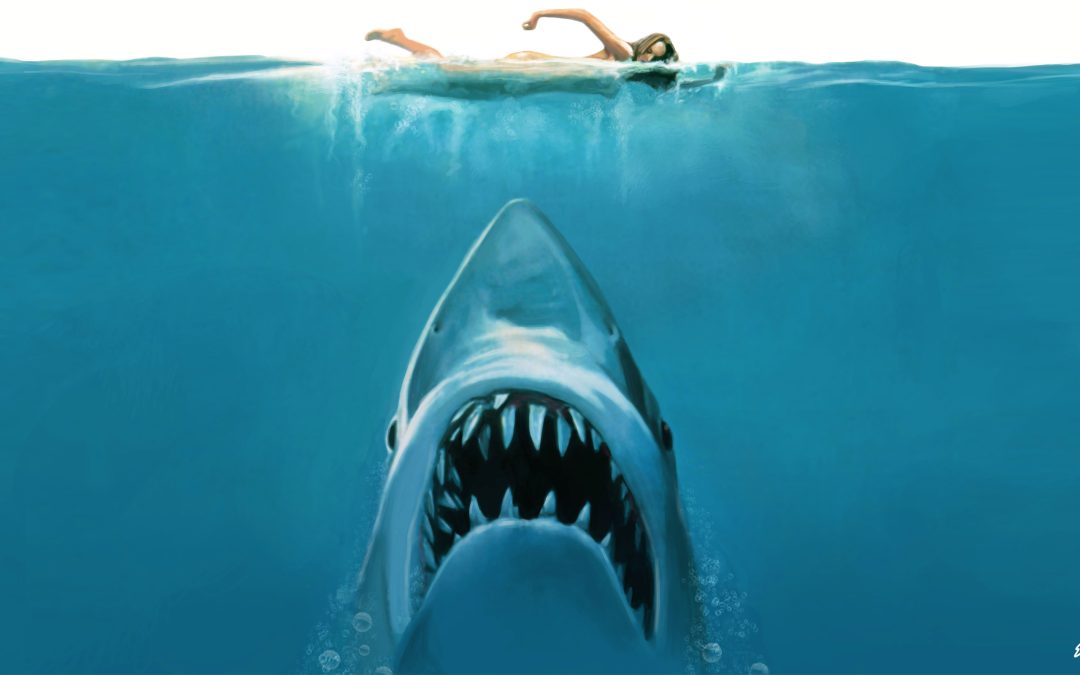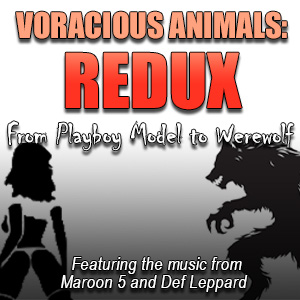In 2020, close to the very start of our journey to build this community for you, our beloved Outposters, the Last Movie Outpost took a poll of our readers to determine the Top 150 movies of all time, in their opinion. Many votes were cast, the results were tabulated, and many surprises were thrown up. However, there was an issue. Jaws only came in second place.
Clearly either a catastrophic mistake, or shenanigans. A robbery!
My favorite movie of all time is Jaws, and this article is all about why, in my humble opinion, it is the greatest.
What did it take to make this movie and what makes it work so perfectly that, to me, it has simply never been equalled?
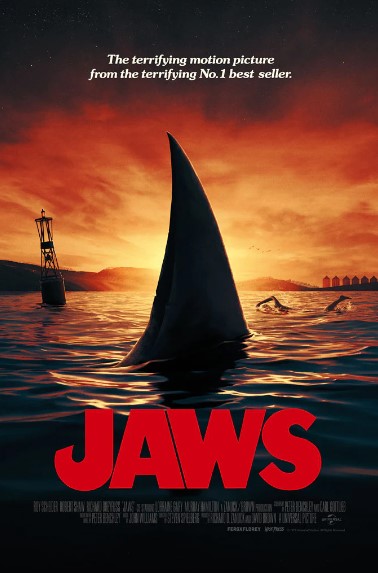
Here’s To Swimmin’ With Bow-Legged Women
It is unfair to say that Jaws was an accident. However, it is very true that it was born out of considerable production adversity. It was not smooth seas and fair winds for the cast and crew. These challenges, though, they unlocked something special. The adversity forced ingenuity and, ultimately, made Jaws a better movie.
Richard D. Zanuck and David Brown were producers at Universal Pictures when Brown’s wife Helen, editor of the literature section of Cosmopolitan noted that this as yet unpublished book by Peter Benchley might make a good movie.

The producers each read the book over the course of a single night. The next day they compared notes and declared it was…
“…the most exciting thing that they had ever read.”
They immediately agreed to make a movie version. Their speed and enthusiasm was actually a lucky break for the project. Brown and Zanuck later said that if they had stopped to read the book a second time they would have realized how difficult it would be to accomplish some of the scenes. Knowing this, they never would have proceeded.
$175,000 (equivalent to approximately $1m in today’s money) later and they had the rights and were off and running. Now they needed a director.
First, they tapped John Sturges. The veteran director was famous for Gunfight At The OK Corral, Ice Station Zebra, The Magnificent Seven, and The Old Man And The Sea. During the meetings, he repeatedly kept referring to the shark as a whale. This led Brown and Zanuck to think he wasn’t the man for the job.
Meanwhile, a young director by the name of Steven Spielberg was in a meeting in their office and noticed a copy of the still-unpublished novel on a desk. He read some of it and immediately wanted to direct it. His first theatrical film, The Sugarland Express, had just been completed for Zanuck and Brown and he pitched that this story had similarities with his previous work Duel. It was about a leviathan targeting everymen.
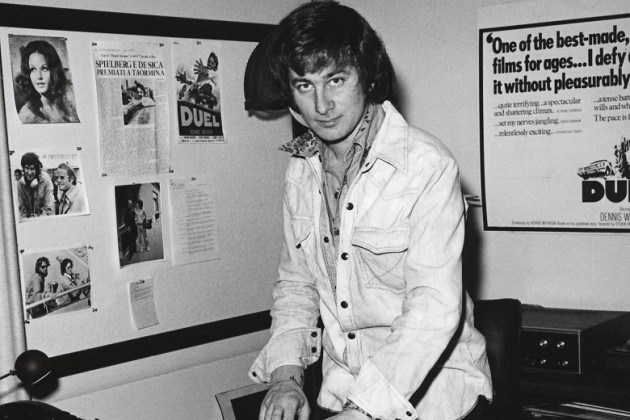
Key Decision #1 – Shoot On Location
Spielberg knew instinctively that the movie had to be shot on location. Too much studio work on sets, or in tanks on a backlot, and the whole feeling of the movie would be off. A worthy endeavor, but shooting at sea is notoriously difficult at the best of times. To do it with a 25 foot long mechanical shark, effects barges, multiple camera rigs and a whole photography unit out on boats was a Herculean undertaking. Nothing worked. Ever.
However, think about how the movie feels. You immediately understand there’s an entire ocean around Chrissie. Amity feels real and lived in, so the small town politics and people pop convincingly off the screen. You can almost feel the sand in your toes in the beach scenes. You feel as isolated as the Orca in act three.
Even the smaller scenes feel real. The Brody’s home, the selectmen’s meeting, Brody in a shop getting supplies for Beach Closed signs. These were all real places, not sets.
The fictitious Amity Island is, as you know, Martha’s Vineyard. An ex-whaling epicenter is now an upmarket holiday retreat and place to live for the wealthy. It is accessible by ferry or by air from Boston or New York.

The shark takes it’s first victim, Chrissie, off South Beach. Chief Brody gets paintbrushes in the town center of Edgartown, at the junction of Water Street and Main Street, which is where the marching band are practicing for 4th of July.
At the end of the main street is the Chappaquiddick Island ferry where Mayor Vaughan (Murray Hamilton) catches up with Brody. Out of Edgartown, toward the popular resort of Oak Bluffs is Joseph A Sylvia State Beach, this is where Alex Kintner meets his tragic end.
Alongside this beach stands the American Legion Memorial Bridge, under which the shark enters the pond and attacks the scoutmaster in his rowboat. Also at Oak Bluffs is Harthaven. This is where the two old fishermen try to catch the shark with a holiday roast. The dock gets torn apart and Charlie ends up in the water with the shark.
Brody’s house is nearly at the point of East Chop. Quint’s shack and the departure point of the Orca was from Menemsha Harbor to the West of the island. The famous billboard stood under the gaze of the lighthouse West of Menemsha near Gay Head.
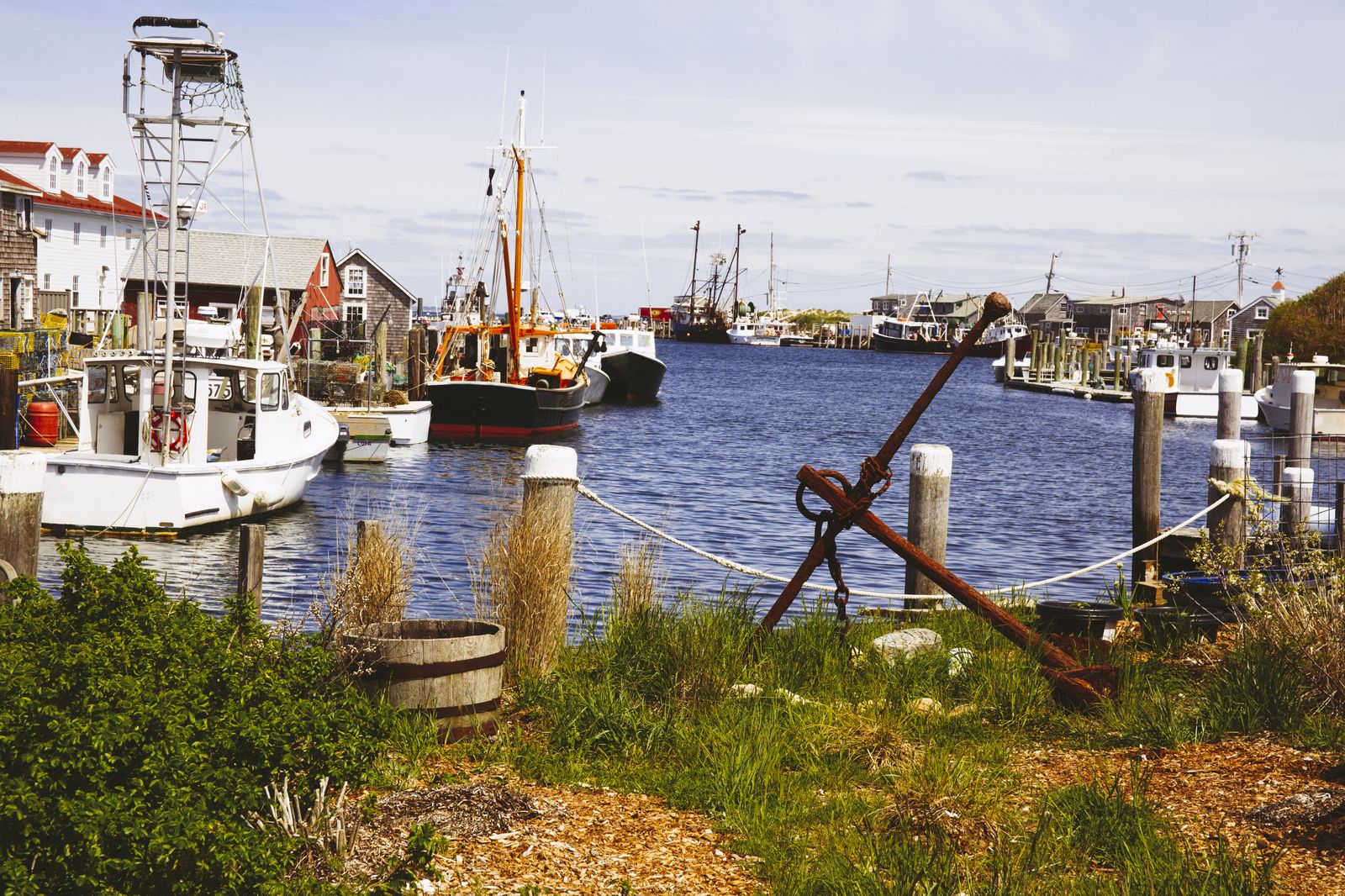
The Orca’s scenes for act three were filmed over long days at sea between Oak Bluffs and East Chop, under well-documented nightmare conditions which made Spielberg swear off ever making another movie at sea.
Interesting Jaws trivia: None of the underwater scenes were filmed there. Chrissie being viewed from below, closing in on Alex on his raft and the dangling legs of swimmers. These were all filmed in the Pacific at State Beach, California.
We feel we know these places now. A trip to Martha’s Vineyard would probably be a little discombobulating as our brains would be programmed to think we were actually on Amity Island because the whole thing has been presented so convincingly. In the movie, it underpins the fantastical with undeniable realism that immerses you from the beginning to the end.
Of course, perfect locations were only one part of the puzzle. You need perfect characters and a perfect plot to make this work, which brings us to…
Key Decision #2 – Change Everything
Some key scenes are lifted and some major beats and points remain, however, there is a lot about Jaws that is so very different from the book so as to be unrecognizable.
Some of the changes were forced on the production. Well-publicized issues with the mechanical shark (more on that later) and the trials of shooting at sea demanded changes to the script. Every day screenwriter Carl Gottlieb and Spielberg himself would work late into the night re-writing the script including working things around a temperamental shark.
Storyboards show Chrissie was to shadowed by the beast, with a ripple here, a pressure wave there, giving a clue that something was wrong. Then she was to be rushed from the side with the shark powering through the water like the Nautilus ramming a steamer in 20,000 Leagues Under The Sea.
In the Kintner attack, the telltale ripple was to return. The shark would be revealed in a crane shot from overhead, circling under the surface beneath the blissfully paddling child on his raft. Then the shark would almost breach with the young child in its mouth. Aborted attempts were made to get this shot, but in the end, the shark just wouldn’t behave.
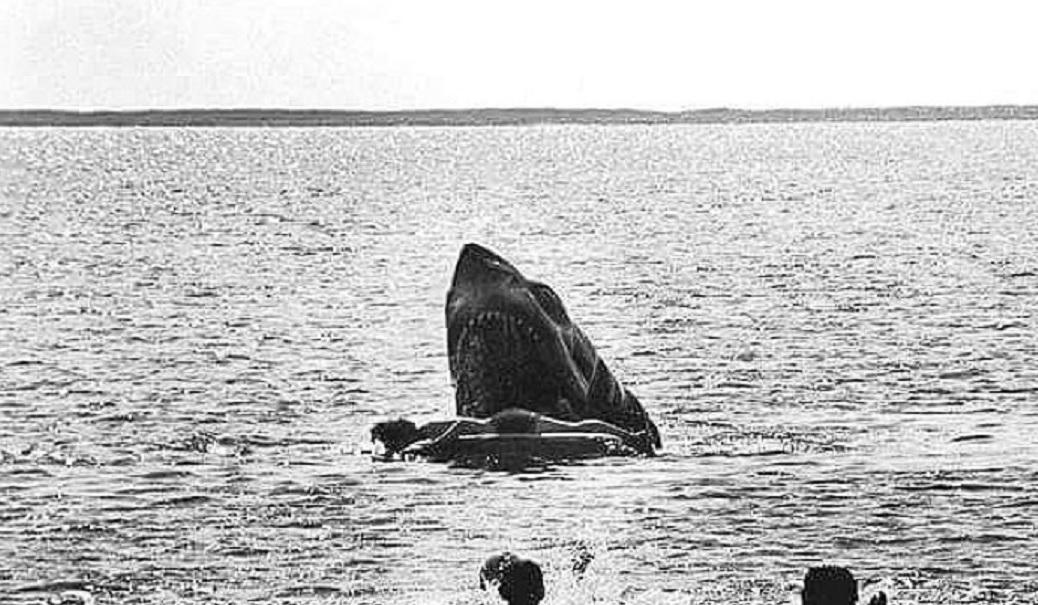
Which worked just as well, as some of these shots are the stuff of nightmares. In the end, the shark would settle its mouth around a dummy on a raft, and then roll-over as if dead. No gnashing or breaching. The machine wouldn’t work. This malfunctioning roll is actually what you see from a distance in the final edit.
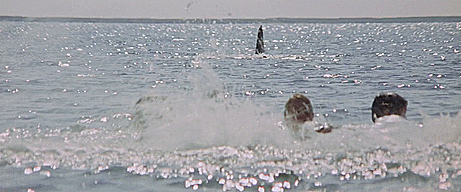
If the shark had worked, then the fate of Pippet would have finally been revealed, and there would have been more victims alongside Alex. The early storyboards, including the fate of Chrissie and Kintner, would have been much more graphic as these storyboards show:
Amity is not an island in the book. It’s a resort town on Long Island. The mafia out of New York are using Amity real estate as an investment and this drives Larry Vaughan’s arc as he is also the owner of a real estate brokerage and up to his neck with them. To him, the beaches must stay open or his partners will be very angry.
This leads to the Brody family cat being killed and children being threatened as a warning. Incidentally, Brody has three sons in the novel.

A major driver in the novel is the high degree of snobbery in the Amity residents. Amity is a place of old money, of the right family names bringing the right connections. It is perhaps closer to The Hamptons than real Martha’s Vineyard.
Brody’s wife Ellen is from old money, the right family. However, she is judged for having married beneath herself by marrying a lowly policeman. Now, as the years pass and she ages, she is resentful of her peers who refused to surrender their social status for true love. Brody knows this and feels inadequate. He is not from old money and will never be one of the right set.
Matt Hooper is very different from the movie version. Not bookish, but dashing, tanned, lean with blond hair. An early actor in line to play him was a young Jan Michael-Vincent in his pre-Airwolf prime.
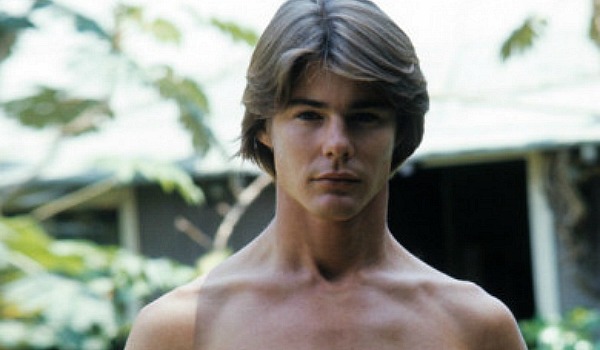
He is the little brother of an ex-boyfriend of Ellen’s who had a crush on her. He is also from the right kind of wealthy family. While Brody is a complete shark novice and constantly out of his depth, Hooper is the expert. All of this causes tension.
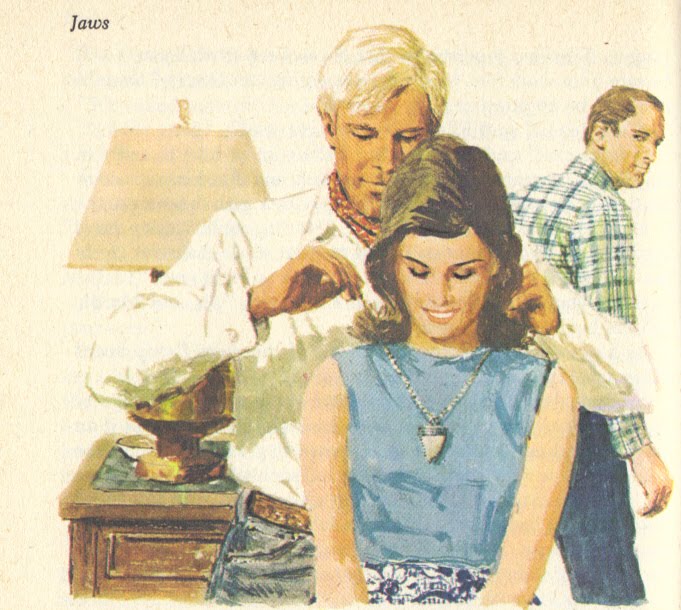
Hooper enjoys antagonizing Brody. Ellen’s increasing regret for her lost past. These drivers combine when the two have a brief, single, sexual affair. Brody suspects and plans to confront Hooper. Before he gets the chance Hooper descends in the cage however unlike the movie, there is no narrow escape. Hooper is fish food in the novel, and in the early drafts of the script.
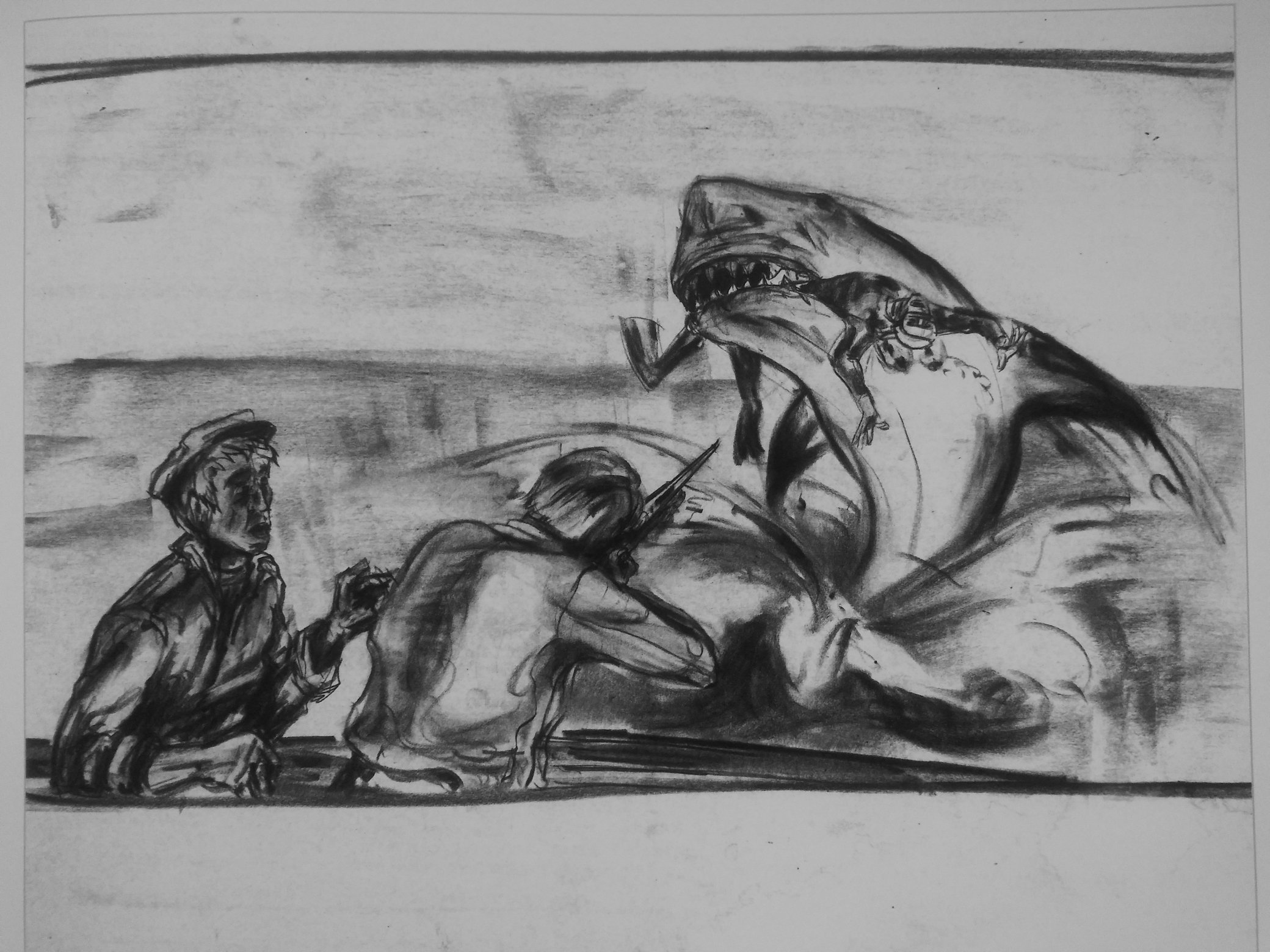
Gottlieb and Spielberg decided this entire subplot had to go. It killed the pace and, Spielberg claimed, made some of the main characters so unlikable that he was rooting for the shark! Instead, we are presented with a rock-solid family unit. In fact, Ellen and Martin’s love for each other is one of the high points of Jaws and gives the character of Brody a firm foundation.
Another major change was the alteration of the third main attack scene with the estuary victim. In this famous sequence, a hoax shark sighting is swiftly forgotten as the real shark enters the pond area off the main beach and flips the local scoutmaster out of his row boat.
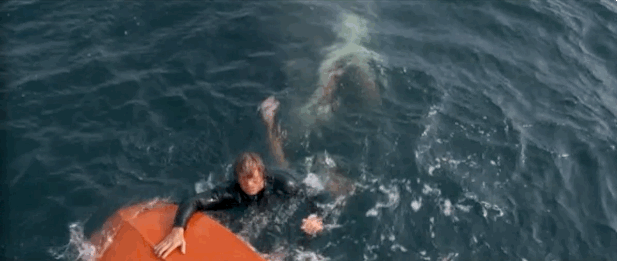
However, in the book the final attack before the town fights back happens after the shark has not been seen for some weeks. Things have returned to normal and they believe the shark has left. However, people are still reluctant to swim. One teenage boy is dared to go in by his friends. When he does, the shark reappears in front of the crowd and goes for the boy. Brody himself intervenes and narrowly snatches the boy from out of the path of the fast-approaching shark.
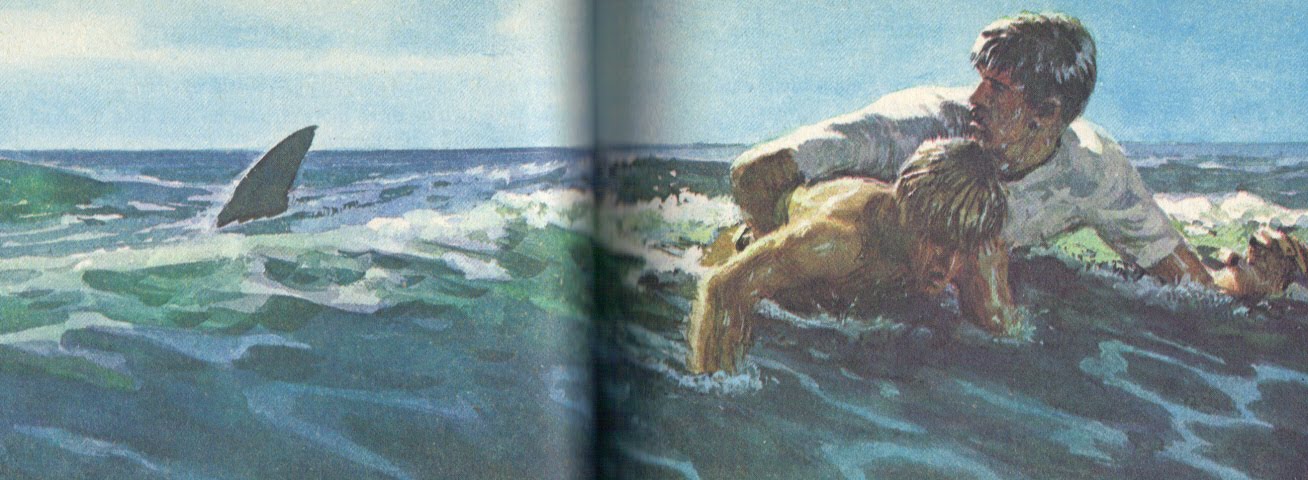
Another major change was the death of Quint. No sliding down a deck towards the gnashing teeth in the book. The shark leaps fully onto the Orca and when it rolls off the sinking boat Quint is entangled in the harpoon lines from the barrels and is dragged to his death by drowning.
Likewise, there is no dramatic final shot at an air tank in the novel. The shark has been shot, gaffed, harpooned, fought, and chased halfway up the coast. It simply dies from its wounds just as Brody grimly accepts his fate as the last man standing.
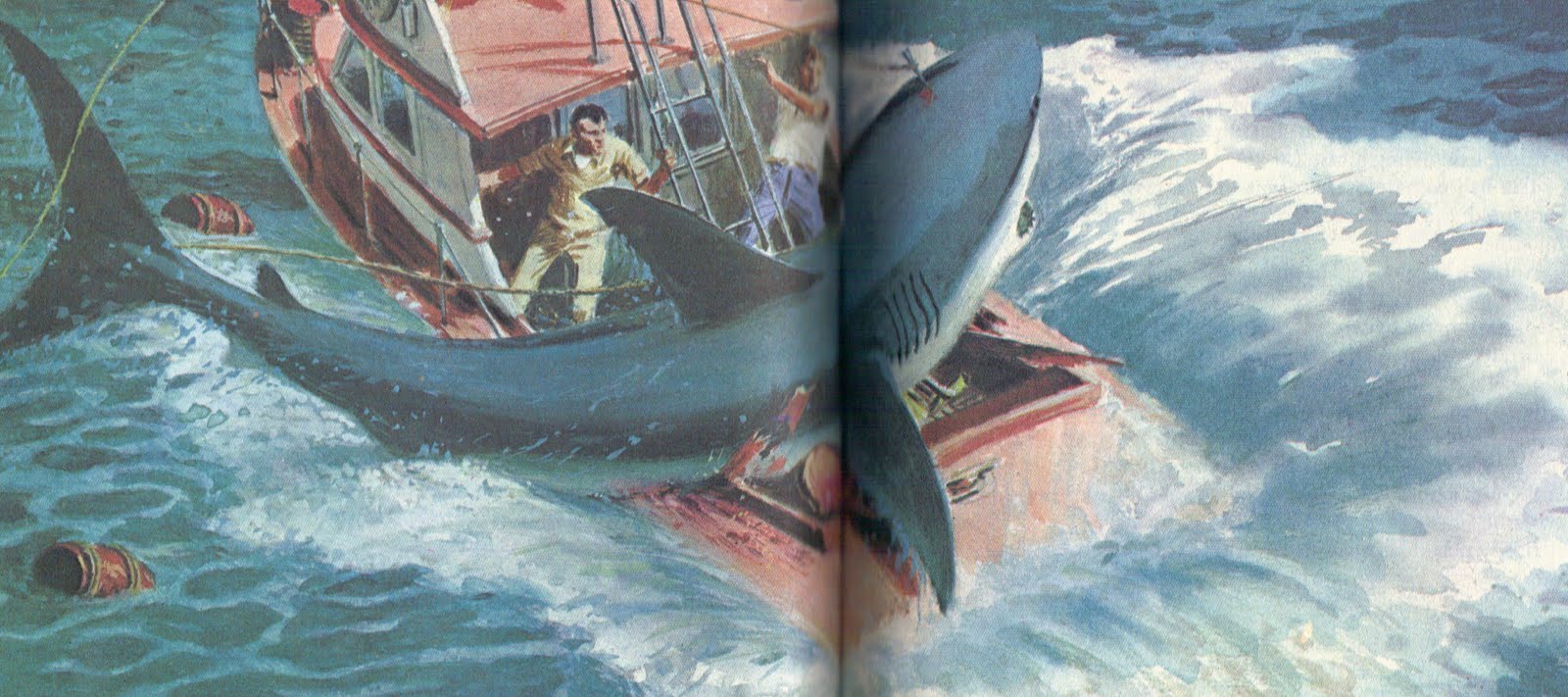
Hooper was going to die in the movie, but pure luck made the character survive. The temperamental mechanical shark had already made it tricky. Then a midget stuntman sealed the deal. Diminutive stuntman Carl Rizzo was brought in to lend a real Great White the enormous scale of the Benchley shark, twenty feet in the novel, twenty-five in the film.
He was to enter the water in a miniature cage with the real shark outside. The real shark became entwined in the cables holding his cage during an attempt to capture this sequence. He refused to re-enter either water or cage again, requiring another rewrite that made Hooper survive. The shark twisting over the top of the empty cage, tangled in the cables, is in the final cut.
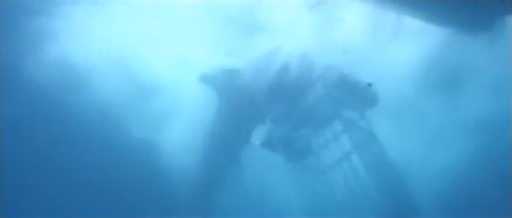
That pesky non-working shark is becoming a theme here, so that brings us to…
Key Decision #3 – Keep The Shark Off Screen
The shark was known as Bruce, named after Spielberg’s lawyer. There were actually three versions of Bruce. First was a sea-sled mounted shark, a full-body prop with its belly missing that was towed with a 300-foot line. Then there were two platform sharks, one that moved from camera left-to-right so all the controls were exposed on its hidden left side. Then there was an opposite model with its right flank uncovered.
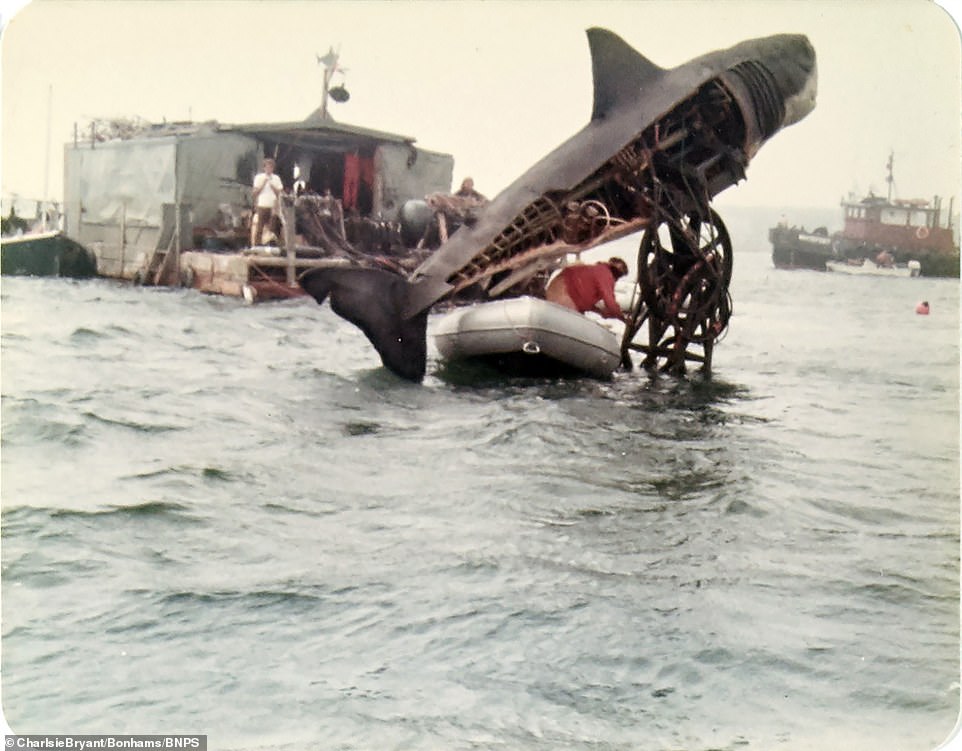
The sharks were designed by art director Joe Alves during the third quarter of 1973. Between November 1973 and April 1974, the sharks were fabricated at Rolly Harper’s Motion Picture & Equipment Rental in Sun Valley, California. Their construction involved a team of as many as 40 effects technicians, supervised by mechanical effects supervisor Bob Mattey, best known for creating the giant squid in 20,000 Leagues Under the Sea.
They were trucked to the shooting location. In early July, the platform used to tow the two side-view sharks capsized as it was being lowered to the ocean floor for the first time, forcing a team of divers to retrieve it.
Then, the internal machinery that had worked in fresh water tests was not so reliable in salt water and the star of the show kept breaking down. The models also required 14 operators to control all of the moving parts.
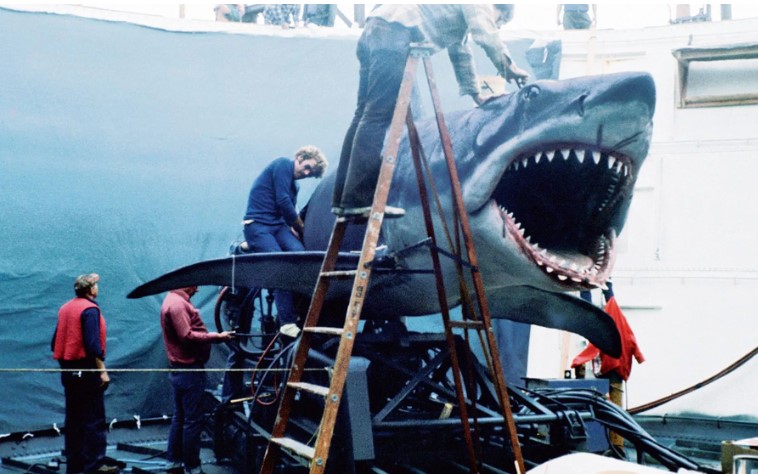
The fact the shark was unreliable meant that the shooting plan had to be amended as Jaws was made. Originally the shark was to feature much more than it did, as early storyboards show. However, instead, faced with a ballooning budget and studio pressure, Spielberg decided to imply the shark’s presence instead in a number of scenes or shoot from the p.o.v. of the shark.
It is this that leads some people to allege that Jaws success is, in part, an accident. If the shark had worked we may have got a more run-of-the-mill creature feature, an expensive B-movie, rather than the action-adventure thriller it became. It may be partially true, the absence of the shark, its implied presence, is part of the magic of Jaws.
However, the subtlety isn’t a total fluke, because there are many, many more examples of mastery at work in Jaws. This brings me to…
Key Decision #4 – Mess With Your Head
You might not realize it, but Spielberg and the other creatives are constantly poking your psychological buttons throughout Jaws. They are programming you and your responses, then snapping the elastic band of your fear lobes and tickling your dread glands throughout the movie. It is very much by design.
First of all is an old trick that M. Night Shyamalan had completely appropriated. Color cues that you don’t realize are heightening your senses. In particular, in Jaws is the use of two colors as two harbingers of doom. Yellow means danger and red means death. When the two are combined an attack is imminent. The only other place red appears, in a very controlled color palette in the movie, is for blood.
Alex Kintner’s raft is yellow, his shorts are red. The red is also on the cabana on the beach. The detritus in the water around Ben Gardner’s boat is red, and it has a solid red stripe around it right at the point in the waterline down to where it has sunk, with yellow floats and some yellow machinery visible.
A strangely positioned yellow line on a certain red boat? Uh-oh, watch out Scoutmaster!
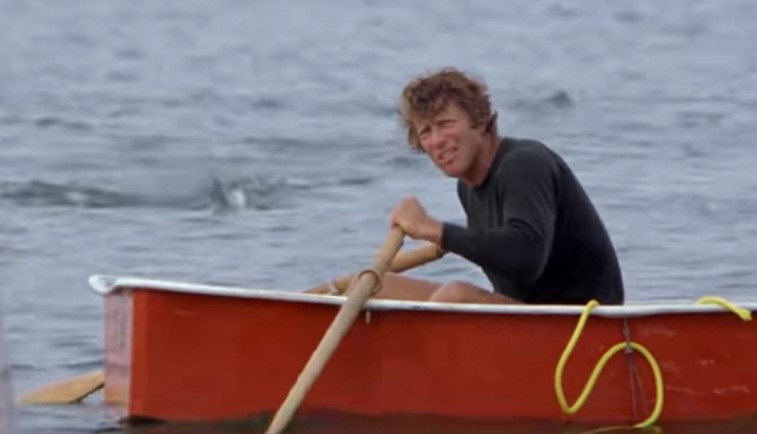
The barrels are yellow, signifying the presence of the danger, and the Orca has a red stripe around it signifying that, when at sea up against this shark, they are isolated and surrounded by death. The red is bigger at rear, where they are most at risk from death, as Quint finds out to his cost at the climax of the movie. More red = more danger.
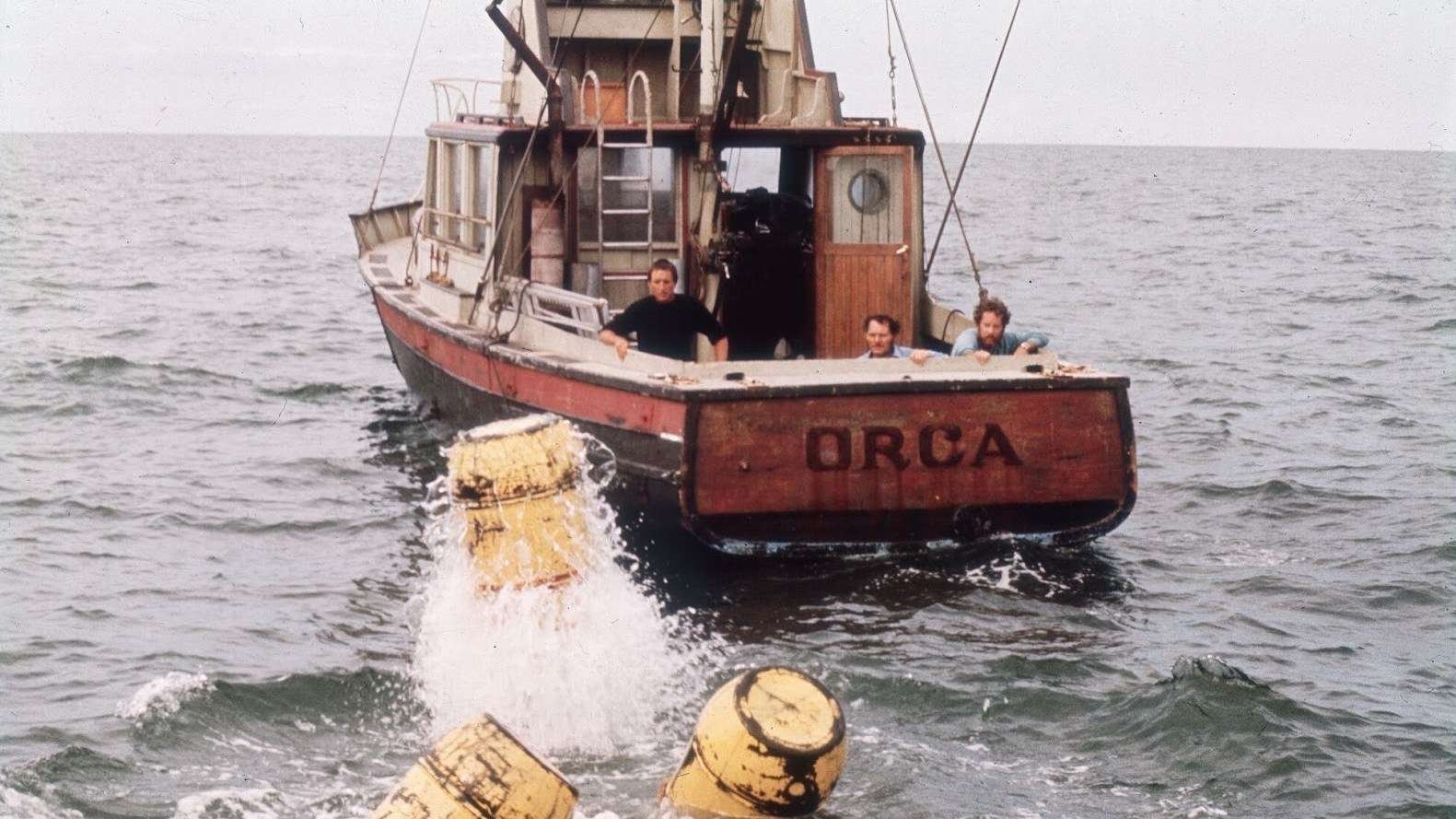
You were being programmed, and you didn’t even realize it. The movie then further shakes you subconsciously with wild shifts in tone and mood. Normally a movie would be criticized by movie wags as being “tonally all over the place” but in this case, it is part of the craft on display
The immediate shift from Chrissie’s violent death to a slow family morning. Gentle, harmonious fisherman whistling giving way immediately to the chords of the shark’s theme as the chain plays out. The screaming of the beach stampede to the total silence of the shark slipping into the pond. The jovial singing on board the Orca, a rare bonding moment between three men, to darkness and danger in one second flat.
It means the mood changes in an instant and you are kept constantly on edge.
You are also thrown off balance by a constantly switching focus of wide shots edited hard against intimate close-ups. Next time you watch Jaws, notice how many times a close up reaction shot is incredibly tight, yet it immediately follows a cinematic panorama. It happens a lot in act three, making you subconsciously context switch from character to predicament then back to character.
Just as quickly as the terror is switched on, it’s switched off. After intense scenes full of pressure you are given a chance to exhale and think. A classic example of this is the immediate lulls that follow every barrel towing scene. Frenetic minutes give way to total stillness.
Another trick is the consistent waterline shot. Whenever people are in the water this kind of shot is often selected, and it’s important.
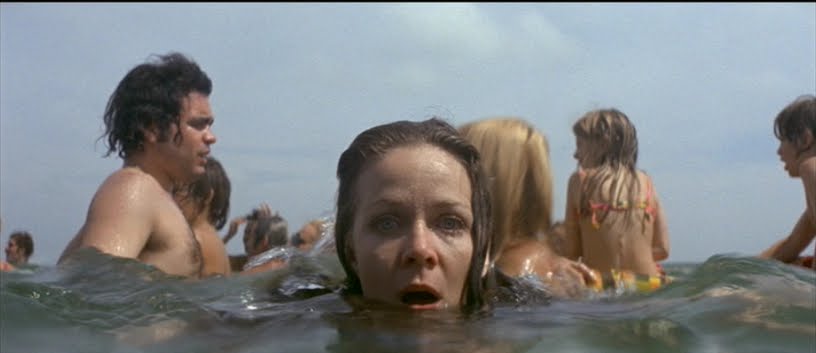
The waterline is halfway up the screen, or more. Jaws is about what lurks beneath but by keeping people on screen hidden from the chest down, it enforces the idea of being exposed to the unseen world below. Admit it, during these scenes, you feel your legs tingle sometimes. Watch others when they watch these parts of the movie, they draw their legs up onto the couch as if the shark could emerge from their carpet and pull them down. Powerful psychology is at play.
Being given visual cues you didn’t realize you were being given, and kept constantly on edge by tone shifts, while carefully selected shots trigger unconscious reactions show a master craftsman at work.
This is all wrapped into a single, wonderful package by the final masterstroke…
Key Decision #5 – The Maestro
What the heck is there left to say about John Williams? Indy’s theme, the Superman march, the Star Wars crawl. He is probably responsible for… what.. seven of the ten most iconic pieces of movie music in the history of cinema?
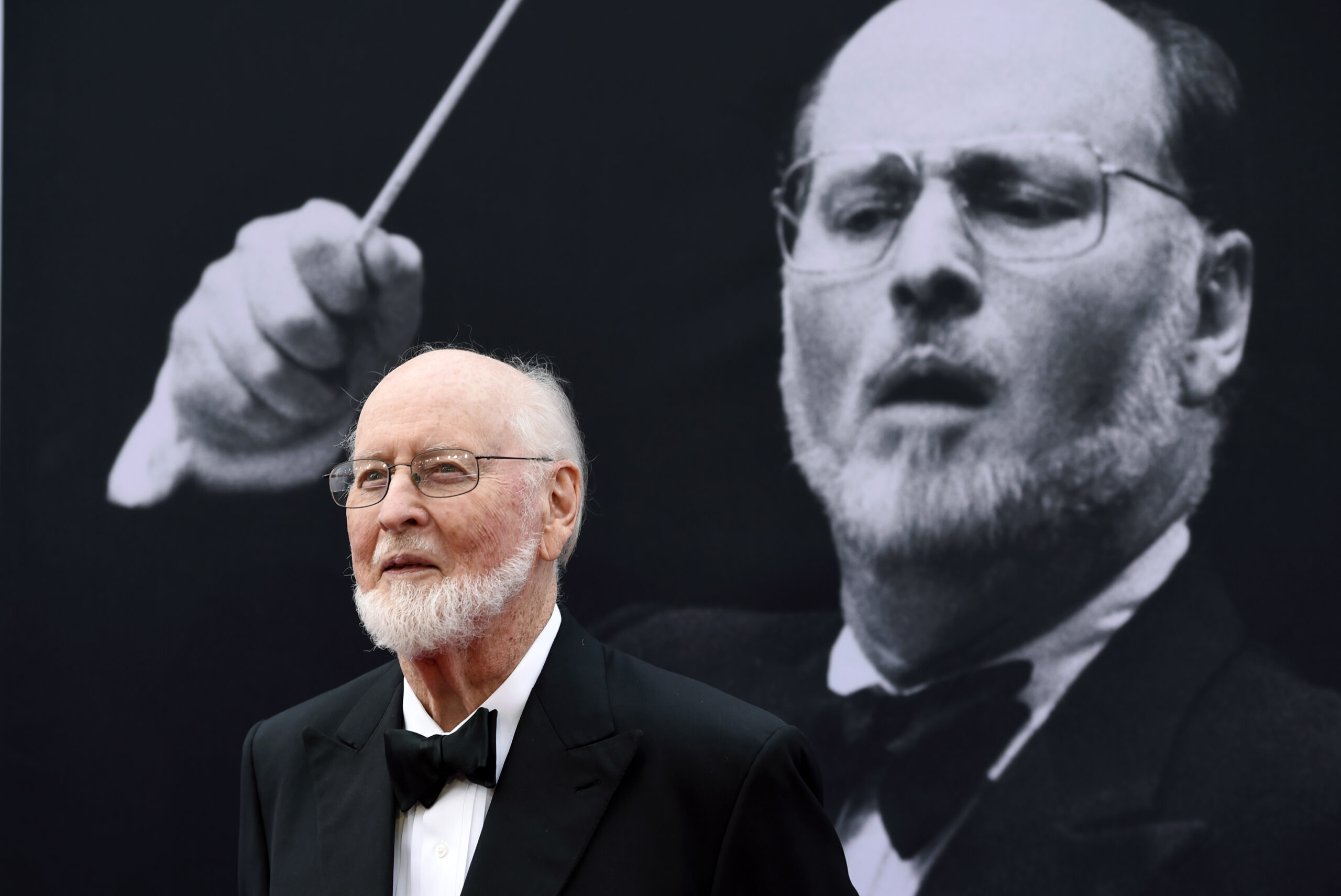
Jaws is right up there. The shark theme is genius in its simplicity while managing to purvey slow lurking up to frenetic activity just by speeding the cadence.
However, the music also plays the same tricks on you with tone shifts to keep you off balance. Sometimes it is playful and whimsical, other times dark and ominous, then it switches directly between the two.
Think of the barrel pursuit theme. Action adventure music at a high cadence when the heroes are on top. They have sighted the shark, got a barrel in him, and are running him down. They feel good, we feel good. Then suddenly, we don’t feel good anymore as the music switches to the shark theme, subconsciously telling us this isn’t all one-way traffic in the fight with the shark.
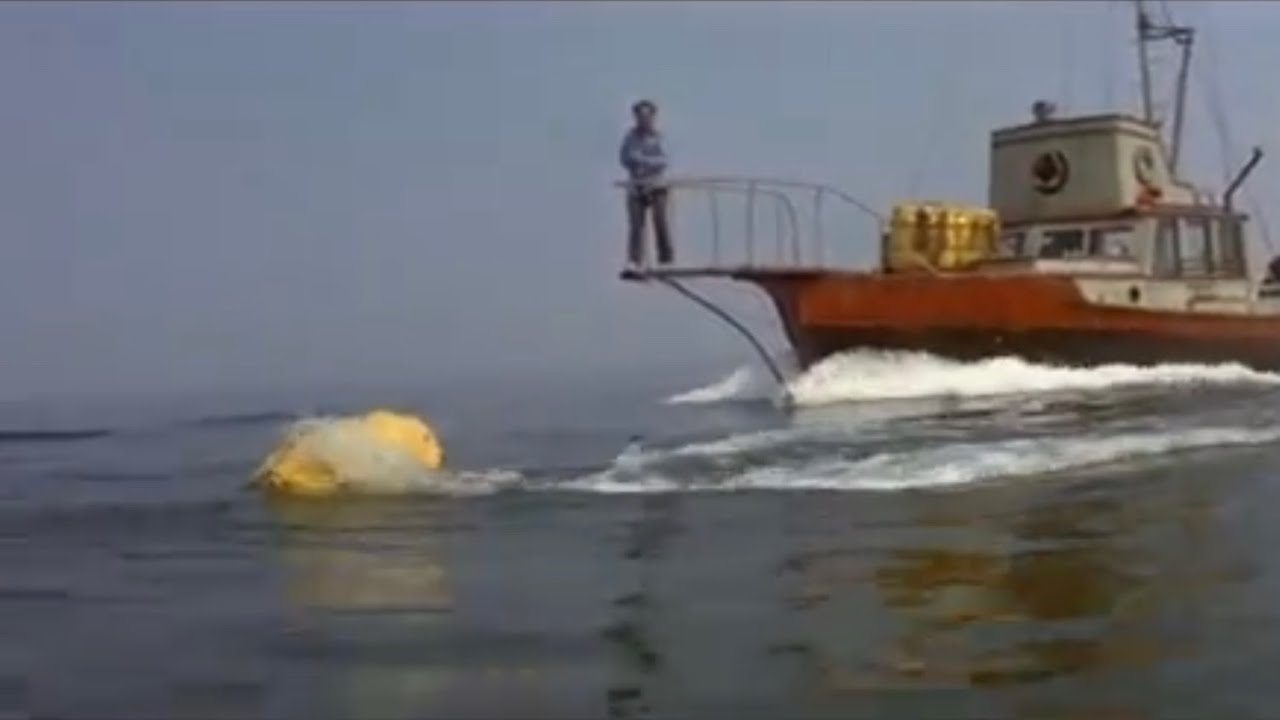
It is also minimalist as a score. There are a lot of scenes with no music at all. This is totally at odds with today’s filmmaking approach where sometimes it feels as if the creative team were worried that the audience wouldn’t know how to feel unless they had a score to tell them.
These quiet moments make the shark theme more ominous when it does arrive – again forcing a reaction from you via a shifting of gears. Almost all of William’s work is perfection, or close, but is there any soundtrack that makes a movie quite as much as the soundtrack makes Jaws?
Makes Me Feel Bad For The Rest
Taken in the round, all this answers the eternal question:
“Why has there never been a shark movie as good as Jaws?”
Sure, Jaws 2 was OK. The Shallows was a decent movie. The Reef accomplished wonders with a minuscule budget. However no matter how many times other filmmakers try they just can’t compete. They don’t even come close. Well, there may be some answers for them here. Some building blocks for them to try.
Of course, you probably need a young, hungry Spielberg at the top of his creative game but with studio pressure, the Maestro on scoring duties, and actors who can make it feel like they are never reading a script, but actually existing in a real world. That would help too.
Check back every day for movie news and reviews at the Last Movie Outpost


